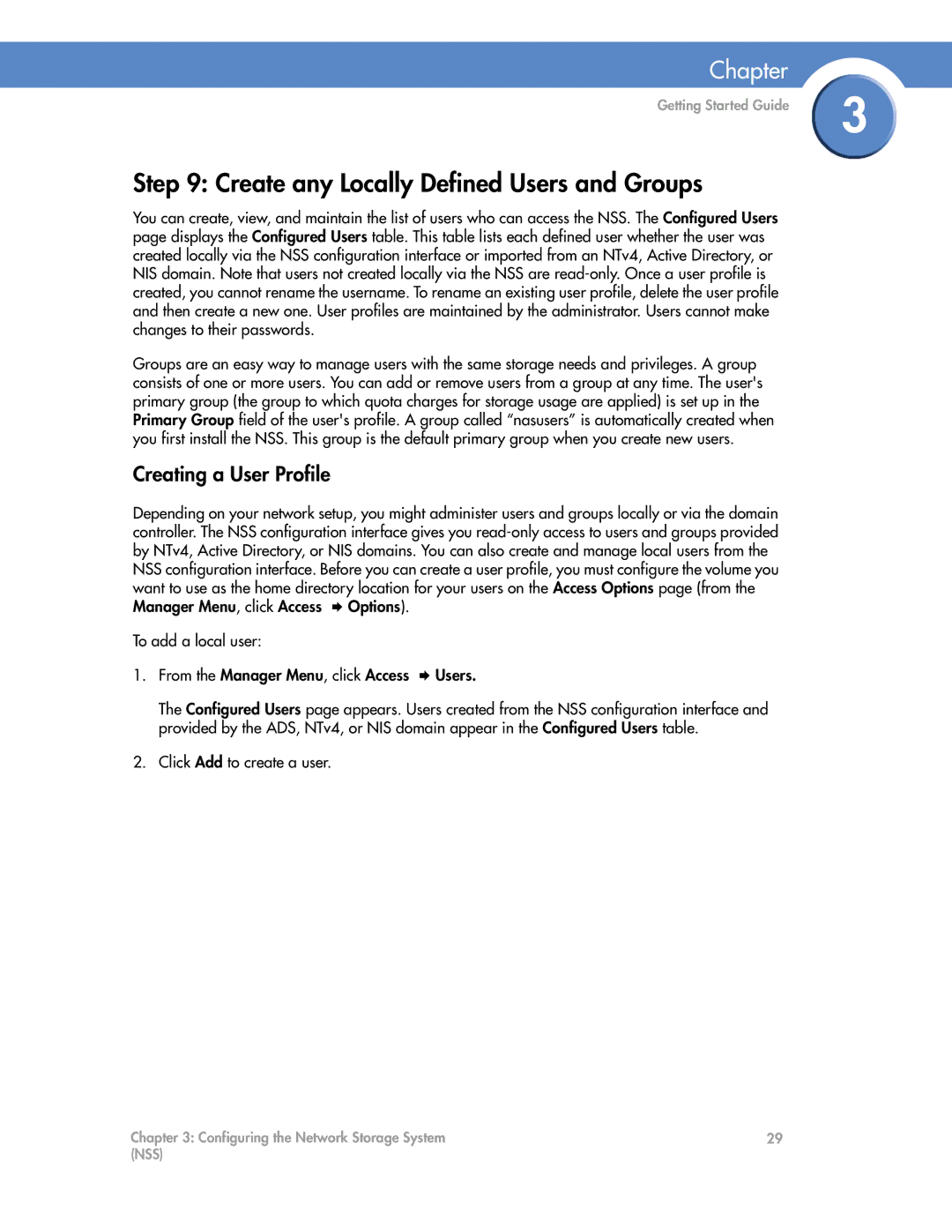
Chapter
Getting Started Guide | 3 |
|
Step 9: Create any Locally Defined Users and Groups
You can create, view, and maintain the list of users who can access the NSS. The Configured Users page displays the Configured Users table. This table lists each defined user whether the user was created locally via the NSS configuration interface or imported from an NTv4, Active Directory, or NIS domain. Note that users not created locally via the NSS are
Groups are an easy way to manage users with the same storage needs and privileges. A group consists of one or more users. You can add or remove users from a group at any time. The user's primary group (the group to which quota charges for storage usage are applied) is set up in the Primary Group field of the user's profile. A group called “nasusers” is automatically created when you first install the NSS. This group is the default primary group when you create new users.
Creating a User Profile
Depending on your network setup, you might administer users and groups locally or via the domain controller. The NSS configuration interface gives you
Manager Menu, click Access Options).
To add a local user:
1. From the Manager Menu, click Access Users.
The Configured Users page appears. Users created from the NSS configuration interface and provided by the ADS, NTv4, or NIS domain appear in the Configured Users table.
2. Click Add to create a user.
Chapter 3: Configuring the Network Storage System | 29 |
(NSS) |
|
